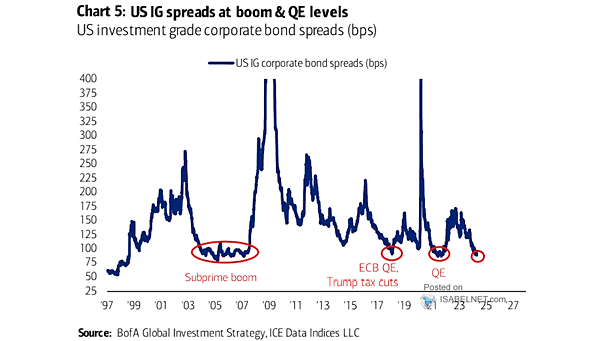U.S. High Yield Credit Spreads vs. VIX
U.S. High Yield Credit Spreads vs. VIX Low high-yield credit spreads and a low VIX may suggest market positivity, but the lack of fear or volatility can paradoxically create a sense of complacency among investors, causing them to overlook potential risks. Image: Topdown Charts


